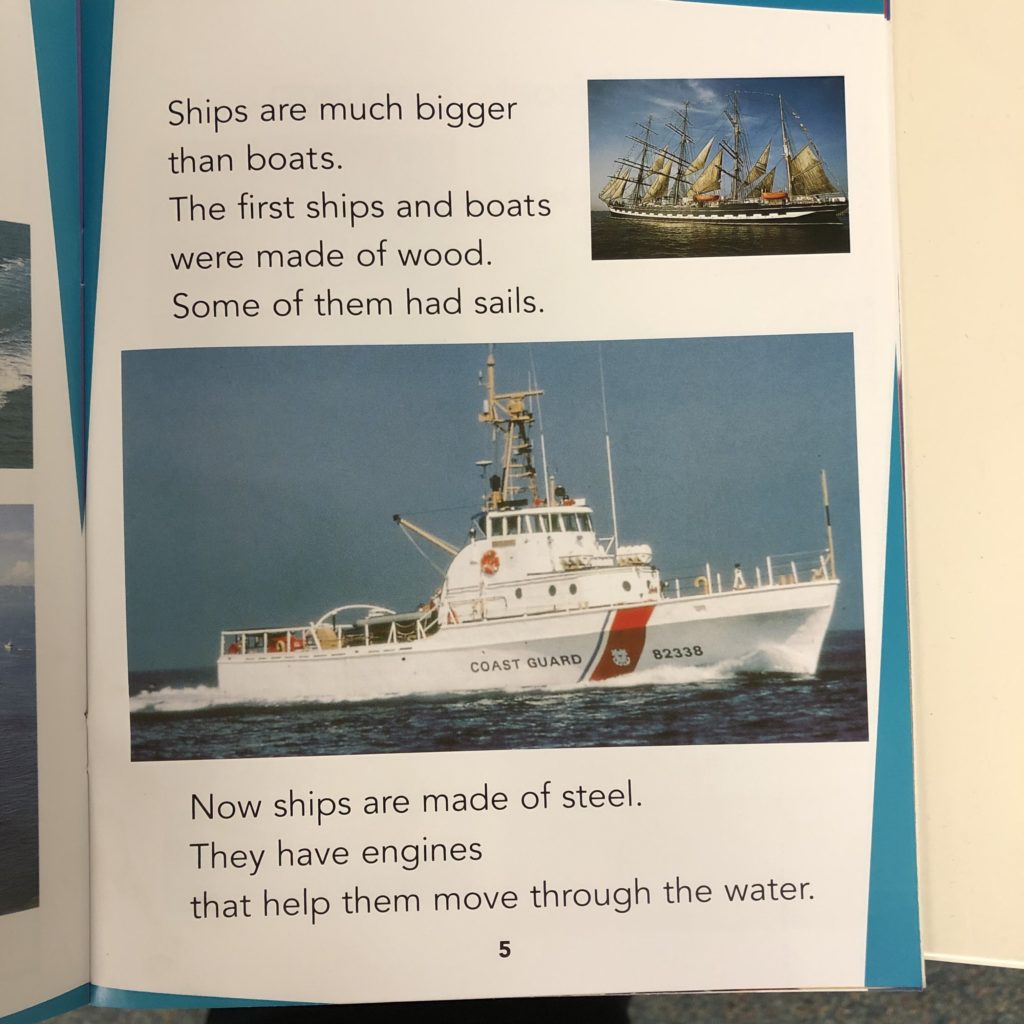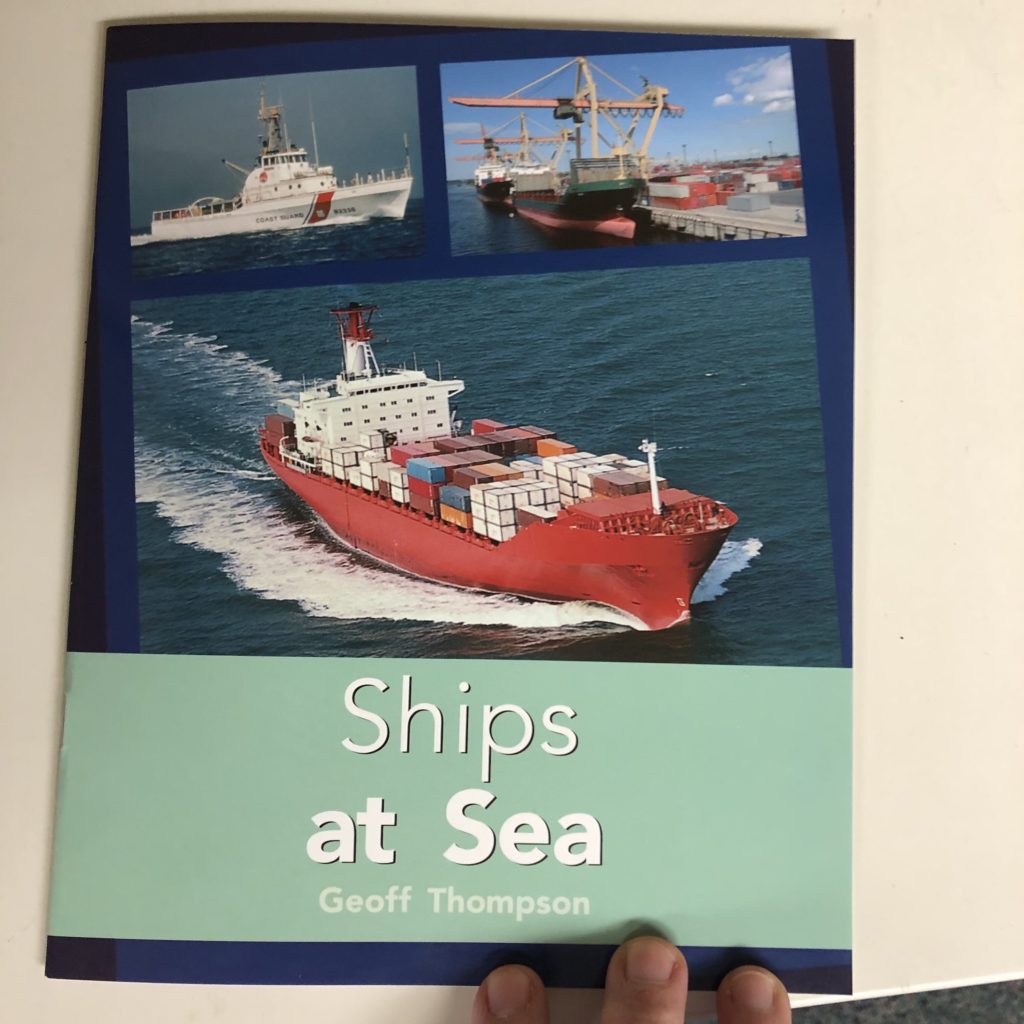
If I know a reader understands what has been explicitly stated in a section of an informational text, then I check for inferential or interpretive understanding. This includes asking questions like:
“Why do you think the author included these key details?”
“What do you think the author’s main idea in this section is?”
Sample Conference

The student read the page about ships (in the image above) easily. When I asked him to tell me what he’d learned about ships (checking for literal understanding), he responded confidently, “Well in the beginning, ships had sails and were made of wood but now they are made of steel and have engines.”
WOW. PRETTY GOOD! I paused for a moment to think about what I could ask to assess for higher level thinking and then said, “So why do you think the author included the key details you mentioned – that ships were made of wood but now they are made of steel?”
There was a clear intake of breath by the student. He was feeling challenged. He leaned back and looked up, clearly chewing on my question. I started counting to 20 in my head, giving him wait time.
Then he looked back at me and exclaimed, “Well…steel is stronger!”
I smiled. We engaged in a short conversation about the benefits of stronger ships.
I closed our conversation by saying, “So what did you just do as a reader? It’s not enough to just read and remember the details. You have to think about why those details are important, huh?” The student heartily agreed 😉

Questions You Might Ask
Coming up with a question to assess higher level thinking may take a few moments. Be gentle with yourself. Give yourself a moment to think about what you can ask. (I’ve never met a student who went home and complained to a parent that their teacher had to stop and think about what to say!!!)
Easy “go to” questions (as relevant) include the following:
- Why is this detail important?
- What does this word (or phrase or comparison or…) mean?
- What is the author’s big idea in this part of the text?
- Why do you think the author gave an example here (or comparison or…)?
You might need to think aloud
With this student, I just had to highlight the value of this kind of thinking – because it was clear that he wasn’t doing it. With other students, I might have to think aloud about the difference between wood and steel and how I thought beyond the text as a result. If you are asking about an unfamiliar word or phrase, you might have to think aloud about context clues you used to figure out the meaning and invite the student to find additional clues with you.
Okay. Hope this helps. Just a reminder – this is the fourth in a series on conferring with transitional stage readers reading informational texts. Just a reminder, tip #1 was about supporting readers when they struggle with word-solving; tip #2 was about assessing and coaching for fluent reading; and tip #3 was about assessing for literal understanding of the text. I find it helpful to think in this order as a I meet with a student.
S
UPDATED 2/19/2021
